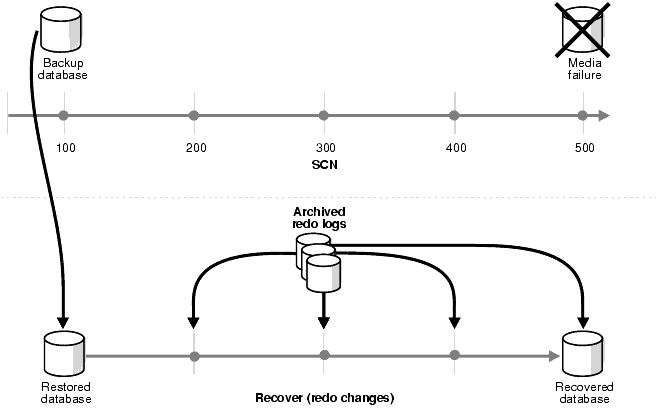| Lesson 2 | Prerequisites |
| Objective | Verify that you have the right background for this course. |
Oracle Database Prerequisites
This course is designed for professionals who want to become certified Oracle Database Administrators. To get the most out of this course you should have a basic understanding of the Oracle database. The following courses or equivalent experience are suggested as prerequisites for this course:
- SQL Fundamentals I and II (or equivalent experience) plus experience working with PL/SQL coding techniques
- Oracle13 C Database Administration, Parts 1-3 or equivalent experience
What Is Backup and Recovery?
A backup is a copy of data and this copy can include important parts of your database such as the control file and datafiles. A backup is a safeguard against unexpected data loss and application errors. If you lose the original data, then you can use the backup to reconstruct it.
Backups are divided into
To restore a physical backup is to reconstruct it and make it available to the Oracle database server. To recover a restored datafile is to update it using redo records, which are records of changes made to the database after the backup was taken. If you use Recovery Manager (RMAN), then you can also recover restored datafiles using incremental backups, which are backups of a datafile that contain only blocks that changed after the last backup.
Oracle performs crash recovery and instance recovery automatically after an instance failure. Instance recovery is an automatic procedure that involves two distinct operations:
In contrast to instance recovery, media recovery requires you to issue recovery commands. If you use SQL*Plus, then you can issue the RECOVER or
Figure 1-2 illustrates the basic principle of backing up, restoring, and performing media recovery on a database:
Backups are divided into
- physical backups and
- logical backups.
To restore a physical backup is to reconstruct it and make it available to the Oracle database server. To recover a restored datafile is to update it using redo records, which are records of changes made to the database after the backup was taken. If you use Recovery Manager (RMAN), then you can also recover restored datafiles using incremental backups, which are backups of a datafile that contain only blocks that changed after the last backup.
Oracle performs crash recovery and instance recovery automatically after an instance failure. Instance recovery is an automatic procedure that involves two distinct operations:
- rolling forward the backup to a more current time by applying online redo records and
- rolling back all changes made in uncommitted transactions to their original state.
In contrast to instance recovery, media recovery requires you to issue recovery commands. If you use SQL*Plus, then you can issue the RECOVER or
ALTER DATABASE RECOVERstatements to apply the archived logs. If you use RMAN, then you issue the recover command to apply archived redo logs or incremental backups to the datafiles.
Figure 1-2 illustrates the basic principle of backing up, restoring, and performing media recovery on a database:
